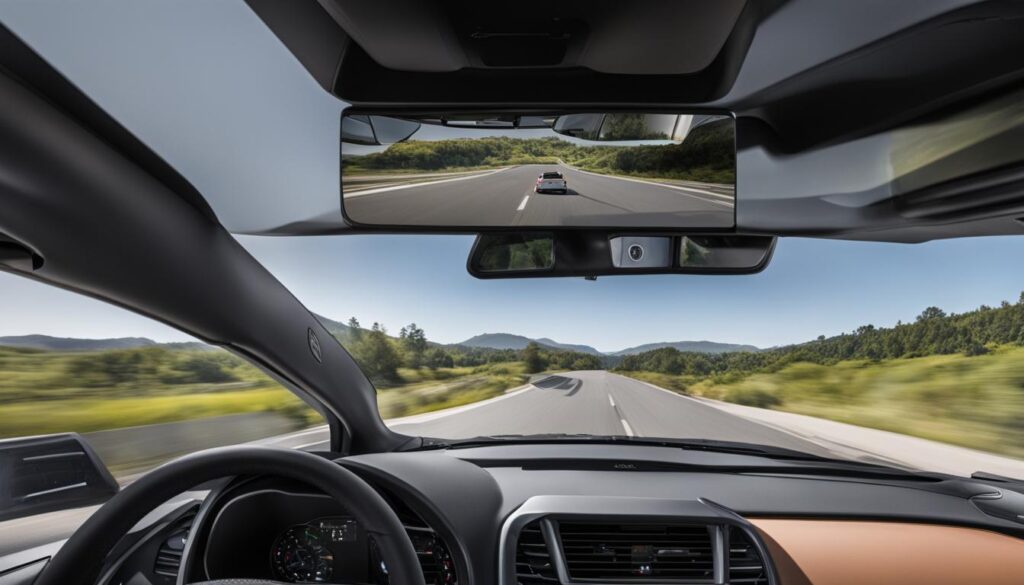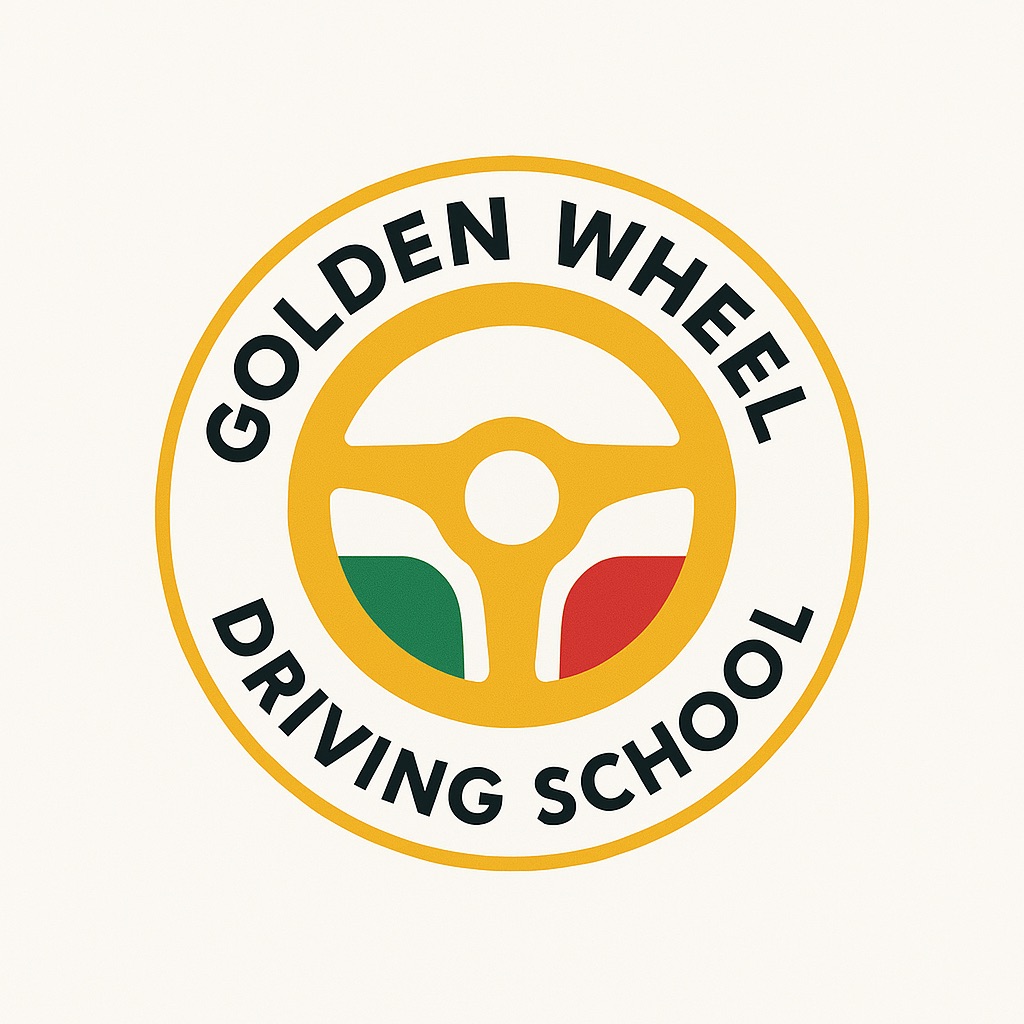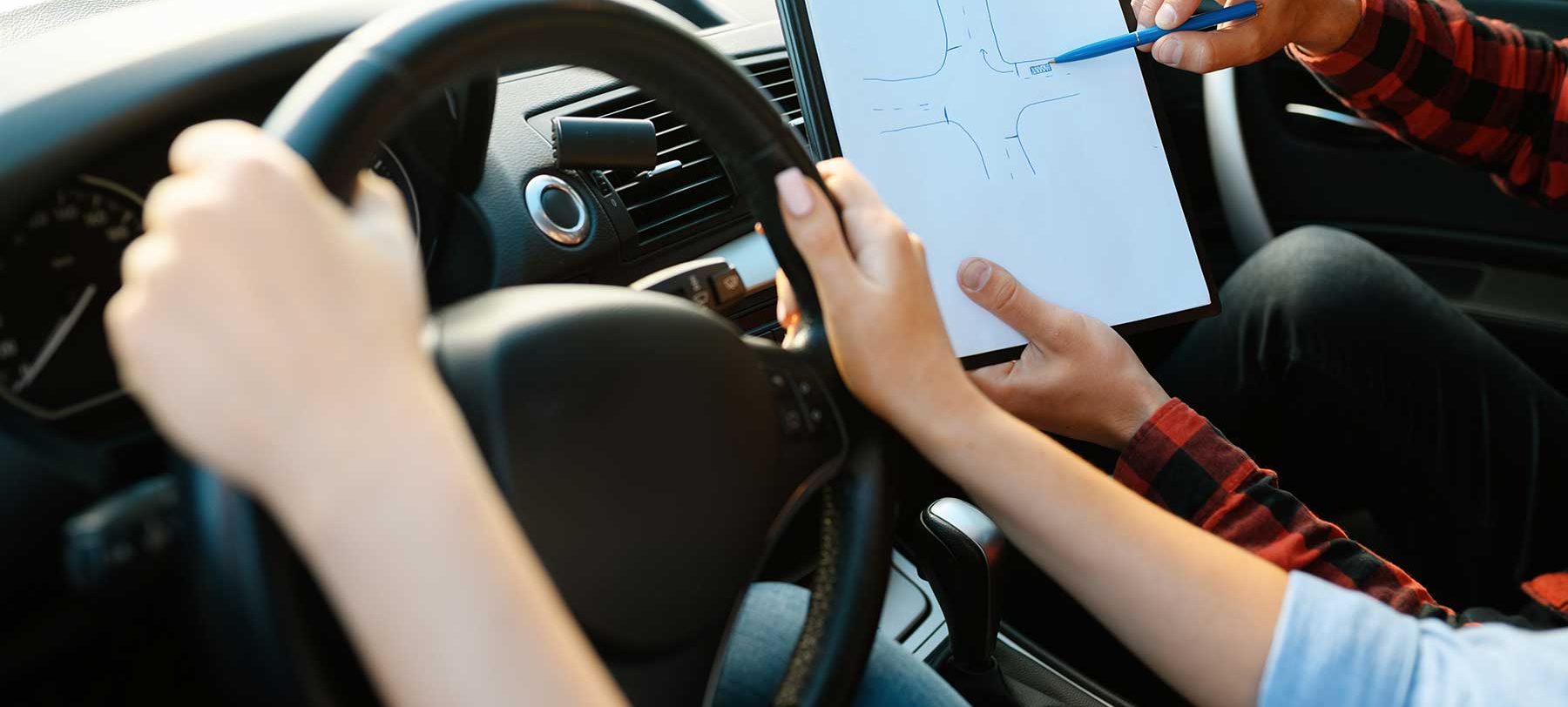Welcome to Golden Wheel Driving School, your trusted source for comprehensive defensive driving courses and classes. As a responsible driver, it is crucial to prioritize safety on the road and equip yourself with the necessary skills to handle any situation that may arise. Our defensive driving program is designed to help you master the art of defensive driving and ensure safer journeys every time you hit the road.
Defensive driving is more than just following traffic rules. It involves adopting techniques and attitudes that focus on anticipating and avoiding potential hazards. By practicing defensive driving, you can significantly reduce the risk of accidents and protect yourself and others on the road.
Whether you are a new driver or have years of experience behind the wheel, our defensive driving course offers a comprehensive curriculum that covers a wide range of defensive driving techniques, tips, and strategies. From understanding the importance of maintaining a safe following distance to learning how to adapt to weather and road conditions, our expert instructors will provide you with the knowledge and skills you need to become a confident and proactive driver.
At Golden Wheel Driving School, we pride ourselves on our commitment to providing high-quality defensive driving education. Our instructors are experienced professionals who are passionate about promoting safe driving practices. They will guide you through interactive lessons, practical exercises, and real-life scenarios to ensure that you gain a deep understanding of defensive driving principles.
By enrolling in our defensive driving course, you will not only enhance your driving skills but also reap the numerous benefits of defensive driving. From lower insurance premiums to a reduced likelihood of traffic violations, defensive driving certification can have a positive impact on your driving record and overall safety on the road.
Key Takeaways:
- Defensive driving involves techniques and attitudes that focus on anticipating and avoiding potential hazards on the road.
- By practicing defensive driving, you can significantly reduce the risk of accidents and ensure safer journeys for yourself and others.
- Golden Wheel Driving School offers comprehensive defensive driving courses designed to equip drivers with essential skills and knowledge.
- Our experienced instructors provide interactive lessons, practical exercises, and real-life scenarios to enhance your defensive driving abilities.
- Defensive driving certification offers benefits such as lower insurance premiums and a reduced likelihood of traffic violations.
The Importance of Defensive Driving
Defensive driving is not just about following traffic laws; it’s about taking proactive measures to reduce the risk of accidents, protecting yourself, and ensuring the safety of others on the road. By adopting defensive driving techniques, you can develop cautious driving habits and minimize potential hazards. At Golden Wheel Driving School, located at 75 Broadway, Elmwood Park, NJ 07407, we understand the significance of defensive driving in creating a safe driving environment.
Defensive driving involves staying alert and adapting your driving to weather and road conditions. By keeping an eye out for potential dangers, such as reckless drivers or unexpected hazards, you can take preventive actions to avoid accidents. Defensive driving also emphasizes the importance of maintaining a safe distance from other vehicles and being aware of blind spots to reduce the chances of collisions.
Handling aggressive drivers is a crucial aspect of defensive driving. By remaining calm and avoiding confrontations, you can diffuse tense situations on the road and prevent aggressive driving behaviors from escalating. Our team at Golden Wheel Driving School can provide you with the necessary skills and strategies to effectively handle aggressive drivers and ensure your safety.
Adapting to weather and road conditions is another crucial component of defensive driving. Being prepared and adjusting your driving based on factors like rain, snow, or fog can help prevent accidents caused by decreased visibility or slippery conditions. Defensive driving teaches you how to react safely and maintain control of your vehicle in challenging weather conditions.
Reducing the risk of accidents is the primary goal of defensive driving. By practicing defensive driving techniques and staying vigilant on the road, you not only protect yourself but also contribute to the safety of passengers, pedestrians, and fellow drivers. Defensive driving can make a significant difference in preventing accidents and saving lives.
Remember, defensive driving is not just a skill; it’s a mindset. By adopting defensive driving habits and continuously practicing them, you can create a safer driving experience for everyone.
Stay tuned for our next section, where I’ll delve into the key principles of defensive driving and provide you with actionable tips to enhance your skills.
To learn more about defensive driving or enroll in our courses, call Golden Wheel Driving School at 201-797-5858.
Key Principles of Defensive Driving
When it comes to defensive driving, there are key principles that form the foundation of safe and proactive driving. By adhering to these principles, drivers can significantly reduce the risk of accidents and ensure a safer journey on the road.
Stay Alert and Avoid Distractions
One of the primary principles of defensive driving is to stay alert and avoid distractions while behind the wheel. Distractions such as using mobile phones, eating, or engaging in other activities can divert your attention away from the road, increasing the chances of an accident. By staying focused on the task of driving, you can better anticipate and react to potential hazards.
Maintain a Safe Following Distance
Keeping a safe following distance from the vehicle ahead is essential in defensive driving. This allows for ample time to react and brake in case the vehicle in front suddenly stops or encounters an obstacle. Maintaining sufficient space also helps prevent rear-end collisions and provides a buffer zone to avoid potential accidents.
Use Mirrors and Check Blind Spots
Effective use of mirrors is crucial for defensive driving. Regularly checking your mirrors allows you to be aware of the traffic around you and helps you anticipate other drivers’ actions. Additionally, always remember to check your blind spots before changing lanes or making turns. Utilizing mirrors effectively enhances your overall awareness and helps you make informed driving decisions.
Obey Traffic Laws
Obeying traffic laws is not only a requirement but also a key principle of defensive driving. Speed limits, stop signs, traffic signals, and other rules of the road are implemented to ensure the safety of all drivers. By following these laws, you contribute to the overall safety of the road and reduce the risk of accidents.
Anticipate and Predict
Defensive driving involves anticipating and predicting potential hazards. By observing the behavior of other drivers, pedestrians, and road conditions, you can proactively adjust your driving to avoid dangerous situations. Being able to anticipate the actions of others and predict potential risks can help you make timely decisions and prevent accidents.
Reduce Speed in Hazardous Conditions
In hazardous conditions such as heavy rain, snow, fog, or construction zones, reducing your speed is critical for defensive driving. These conditions can impact visibility and road grip, making it necessary to adjust your driving accordingly. By slowing down, you have more time to react to unexpected situations and maintain control of your vehicle.
By incorporating these key principles into your driving habits, you can master defensive driving and contribute to a safer road environment for yourself and others.
Tips for Practicing Defensive Driving
To further enhance your defensive driving skills and ensure safer journeys on the road, consider implementing the following tips:
- Take a Defensive Driving Course: Enrolling in a defensive driving course, such as the one offered by Golden Wheel Driving School, can provide you with valuable insights, practical exercises, and expert tips from experienced instructors. These courses will help you develop a strong foundation in defensive driving techniques and enhance your overall driving skills.
- Plan Your Route: Before hitting the road, take a few moments to plan your route in advance. Familiarize yourself with the directions and key landmarks along the way. Having a clear and well-planned route will help you stay focused on the road and minimize distractions.
- Avoid Fatigue: Fatigue can impair your reaction time and decision-making abilities, making it crucial to avoid driving while tired. Make sure to get enough rest before embarking on a journey, take regular breaks during long drives, and never hesitate to pull over if you feel drowsy. Your safety should always be a top priority.
- Use Turn Signals: Indicate your intentions to other drivers by using your turn signals consistently. Whether you’re changing lanes, making a turn, or merging into traffic, using turn signals will help others anticipate your moves and enable them to adjust their driving accordingly. This simple action can significantly reduce the risk of accidents and foster better communication on the road.
- Stay Calm in Traffic: Heavy traffic situations can be stressful and frustrating, but it’s crucial to remain calm and composed. Avoid aggressive maneuvers, such as tailgating or excessive honking, as these behaviors can escalate tensions and increase the likelihood of accidents. Give yourself plenty of time for your journey and practice patience when dealing with traffic delays.
By following these tips, you’ll be better equipped to navigate the road with confidence and promote a safer driving environment for yourself and others.
Pay Attention and Observe Other Drivers
Paying attention and observing other drivers are crucial aspects of defensive driving. By being aware of your surroundings and the actions of other drivers, you can anticipate potential hazards and avoid collisions. It is especially important to be vigilant when merging on the highway, turning onto the main road, or driving at night or in hazardous weather conditions.
When merging on the highway, carefully assess the flow of traffic and find the appropriate gap to enter. Observe the speed and direction of the vehicles around you to ensure a smooth merge.
When turning onto the main road, be mindful of vehicles approaching from both directions. Wait for a clear opening and use your turn signal to communicate your intentions to other drivers.
Driving at night or in hazardous weather conditions requires extra caution. Pay close attention to the road ahead and adapt your speed to the visibility and road conditions. Be aware of other drivers who may not be as cautious and always anticipate potential hazards.
Observing and understanding the behavior of other drivers can significantly contribute to your overall safety on the road. By being proactive and attentive, you can make informed decisions and avoid dangerous situations. Remember, defensive driving is about protecting yourself and others on the road.
| Driving Situation | Observation Tips |
|---|---|
| Merging on the highway | – Assess the flow of traffic before merging – Find a suitable gap to enter – Be aware of vehicles approaching from both sides |
| Turning onto the main road | – Wait for a clear opening before turning – Use your turn signal to communicate your intentions – Watch out for approaching vehicles |
| Driving at night or in hazardous weather conditions | – Adjust your speed to the visibility and road conditions – Anticipate potential hazards – Be cautious of other drivers who may not be as attentive |
Know How to Respond to Various Emergencies
As a defensive driver, it is essential to know how to react to emergencies that may arise on the road. Being prepared and knowing the proper response techniques can help you navigate unexpected situations safely and minimize the risk of accidents.
One common emergency situation is driving on snow or ice. These conditions can make the road surface slippery and decrease your vehicle’s traction. To safely navigate through snow or ice, it’s important to reduce your speed, increase your following distance, and gently apply the brakes to avoid skidding.
Another emergency situation you may encounter is the need to swerve to avoid another car. While it’s crucial to react quickly, it’s equally important to maintain control of your vehicle. When swerving, make sure to grip the steering wheel firmly, maintain a neutral throttle position, and steer smoothly to avoid losing control.
In some cases, you may need to swerve to avoid an animal on the road. While it can be instinctive to swerve, sometimes it’s safer to maintain your course and brake instead. Swerving suddenly can lead to losing control of your vehicle or colliding with other obstacles. Assess the situation carefully and make the best decision for your safety.
Remember, staying calm and composed during emergency situations is crucial. Panic can impair your judgment and lead to hasty decisions. By practicing defensive driving techniques and knowing how to respond to emergencies appropriately, you can confidently tackle unexpected challenges on the road.
Drive at a Safe Speed
When it comes to driving safely, speed is a critical factor that should never be ignored. As a defensive driver, I understand the importance of maintaining a safe speed to ensure the well-being of myself, passengers, and other road users.
To drive at a safe speed, it is crucial to always adhere to the posted speed limits. These limits are set based on various factors, including road conditions and the surrounding environment. By respecting these limits, we can significantly reduce the risk of accidents and create a safer driving environment for everyone.
However, it’s not enough to simply follow the speed limits. Defensive drivers also know the importance of adjusting their speed to match the road conditions. Whether it’s heavy traffic, adverse weather, or a construction zone, adapting our speed can help us navigate these situations more safely and avoid potential hazards.
“Maintaining a safe speed is essential to master defensive driving and ensure a safer journey.”
Excessive speed can be just as dangerous as driving too slowly. When we exceed the speed limits or drive at an unsafe speed, we compromise our ability to react to unexpected situations. It increases our stopping distance and reduces our control over the vehicle, making accidents more likely to occur.
As a defensive driver, I always prioritize safety over speed. I understand that arriving a few minutes later is far better than risking lives and causing irreversible damage. By driving at a safe speed, I can confidently respond to changing road conditions, anticipate potential dangers, and maintain better control of my vehicle.
| Benefits of Driving at a Safe Speed | Consequences of Driving at an Unsafe Speed |
|---|---|
|
|
By driving at a safe speed, we prioritize the well-being of ourselves and others. It is a simple yet crucial practice that every driver should adopt as part of their defensive driving skills.

Tips for Driving at a Safe Speed
- Always pay attention to speed limit signs and obey them.
- Adjust your speed according to the road conditions, such as rain, snow, or fog.
- Stay alert and watch out for unpredictable situations that may require you to slow down, such as pedestrians or animals on the road.
- Remember that driving too slowly can also be dangerous, so find a balance between being cautious and maintaining an appropriate speed.
- Avoid the temptation to speed up when others around you are driving faster; stick to your safe speed.
Eliminate Distractions
When it comes to defensive driving, eliminating distractions is essential to ensure the safety of yourself and others on the road. One of the most significant distractions for drivers today is smartphone use.
Using your phone while driving diverts your attention away from the road, increasing the risk of accidents. To maintain focus and practice effective defensive driving, it is crucial to avoid phone use and any other activities that take your attention away from the task at hand – driving.
Keep your phone out of reach and set it to silent or airplane mode to eliminate the temptation to check notifications or answer calls. Remember, a momentary distraction can have severe consequences.
While driving, prioritize your safety and the safety of others by dedicating your full attention to the road. Keep your hands on the steering wheel and your focus solely on driving. By eliminating distractions and staying fully engaged, you can maintain better situational awareness and reduce the risk of accidents.
Remember, it only takes a split second of distraction to change lives forever. Let’s keep our roads safe for everyone.
The Dangers of Phone Use While Driving
The use of smartphones while driving has become an increasingly serious issue in recent years. According to the National Highway Traffic Safety Administration (NHTSA), distracted driving claimed 3,142 lives in 2019 alone.
Engaging in activities such as texting, browsing social media, or even making phone calls diverts your attention from the road. This leads to slower reaction times, decreased situational awareness, and an increased likelihood of being involved in an accident.
Research has shown that using a phone while driving increases the risk of a crash by four times, comparable to the impairment caused by driving with a blood alcohol concentration of 0.08 percentage or higher. In fact, a study conducted by the Virginia Tech Transportation Institute found that texting while driving makes the risk of a crash 23 times higher.
Let’s put an end to distracted driving by eliminating phone use and focusing solely on driving.
Golden Wheel Driving School – Your Partner in Defensive Driving
At Golden Wheel Driving School, we understand the importance of defensive driving and the role it plays in keeping our roads safe. As a trusted driving school located in Elmwood Park, NJ, we provide comprehensive defensive driving courses that emphasize the importance of eliminating distractions and focusing solely on driving.
To learn more about our defensive driving classes and how they can help you become a safer driver, contact us at 201-797-5858 or visit our website. Invest in your safety and the safety of others by mastering the art of defensive driving.
| Distracted Driving Statistics | Dangers | Consequences |
|---|---|---|
| In 2019, distracted driving resulted in 3,142 deaths in the US. | Using a phone while driving increases the risk of a crash by four times. | Distracted driving can lead to severe injuries, fatalities, and emotional trauma for all parties involved. |
| In the same year, an estimated 424,000 people were injured in crashes involving distracted drivers. | Texting while driving makes the risk of a crash 23 times higher. | Drivers caught using their phones may face fines, license suspensions, and increased insurance rates. |
| Approximately 9% of fatal crashes in 2019 were reported as distraction-affected crashes. | Engaging in phone use while driving leads to slower reaction times and decreased situational awareness. | Distracted driving convictions can have long-term consequences, including difficulty finding employment or higher insurance premiums. |
Proper Use of Mirrors
Effective use of mirrors is crucial in defensive driving. By regularly checking your rearview and side mirrors, you can maintain a comprehensive view of the traffic around you. It is essential to utilize mirrors properly before changing lanes or making turns, as they help you identify blind spots and enhance your overall awareness of your surroundings. By incorporating this practice into your driving routine, you can significantly contribute to your defensive driving skills and ensure a safer journey on the road.

Remember, checking your mirrors regularly and utilizing them before changing lanes or making turns is essential to stay vigilant on the road. By adopting this defensive driving technique, you can minimize the risk of accidents and keep yourself and others safe.
Conclusion
Mastering defensive driving techniques is crucial for ensuring safety on the road. By consistently practicing defensive driving habits such as staying alert, maintaining a safe following distance, obeying traffic laws, and anticipating potential hazards, drivers can greatly reduce the risk of accidents and protect themselves and others on the road.
One effective way to enhance defensive driving skills is by enrolling in a defensive driving course. Courses offered by reputable institutions like Golden Wheel Driving School provide valuable insights, practical exercises, and expert tips from experienced instructors. These courses can help drivers develop a strong foundation in defensive driving, further improving their abilities to navigate the road with confidence and competence.
By adopting defensive driving techniques, drivers not only safeguard their own lives but also contribute to a safer driving environment for everyone. The benefits of defensive driving extend beyond accident prevention. It promotes a more courteous and responsible approach to driving, reducing stress and promoting overall road safety.
Remember, defensive driving is an ongoing practice that requires continuous attention and effort. By prioritizing defensive driving techniques, drivers can make a significant impact on their own safety and the safety of others on the road.
FAQ
What is defensive driving?
Defensive driving is a set of techniques and attitudes that focus on anticipating and avoiding potential hazards while driving, helping to reduce the risk of accidents and ensure safer journeys on the road.
Why is defensive driving important?
Defensive driving is important because it promotes cautious and proactive driving habits, reducing the risk of accidents and protecting yourself and others on the road. It also emphasizes adapting to weather and road conditions and handling aggressive drivers with calmness and caution.
What are the key principles of defensive driving?
The key principles of defensive driving include staying alert and avoiding distractions, maintaining a safe following distance, using mirrors effectively to check blind spots, obeying traffic laws, anticipating the actions of other drivers and pedestrians, and reducing speed in hazardous conditions.
How can I practice defensive driving?
You can practice defensive driving by taking a defensive driving course, planning your route in advance, avoiding driving while fatigued, using turn signals to indicate your intentions, and staying calm in heavy traffic situations. These techniques will help you develop a strong defensive driving foundation and navigate the road with confidence.
Why is it important to pay attention and observe other drivers?
Paying attention and observing other drivers is important because it helps you anticipate potential hazards and avoid collisions. Being aware of your surroundings and the actions of other drivers is especially crucial when merging on the highway, turning onto the main road, or driving at night or in hazardous weather conditions.
How should I respond to emergencies while driving?
Knowing how to respond to emergencies is an essential aspect of defensive driving. This includes knowing how to react when driving on snow or ice, swerving to avoid another car, or swerving to avoid an animal. Proper response techniques can help you navigate unexpected situations safely and minimize the risk of accidents.
What is the importance of driving at a safe speed?
Driving at a safe speed is crucial for driving safety. It is important to adhere to posted speed limits and adjust your speed according to road conditions. Exceeding speed limits or driving too slowly can both be dangerous and increase the risk of accidents. Maintaining a safe speed is essential for defensive driving and ensuring a safer journey.
How can I eliminate distractions while driving?
To practice effective defensive driving, it is crucial to eliminate distractions. Avoid using your phone or engaging in any other activities that take your attention away from driving. Focus solely on the task of driving and keep your hands on the steering wheel. By eliminating distractions, you can maintain better focus and reduce the risk of accidents.
How should I properly use mirrors in defensive driving?
Properly utilizing mirrors is essential in defensive driving. Regularly check your rearview and side mirrors to have a comprehensive view of the traffic around you. Use mirrors before changing lanes or making turns to avoid blind spots and enhance your awareness of your surroundings. By using mirrors effectively, you can significantly contribute to your defensive driving skills.
What are the benefits of defensive driving?
Defensive driving offers several benefits, including reducing the risk of accidents, protecting yourself and others on the road, adapting to changing weather and road conditions, and handling aggressive drivers with calmness and caution. Practicing defensive driving techniques can contribute to a safer driving environment.







